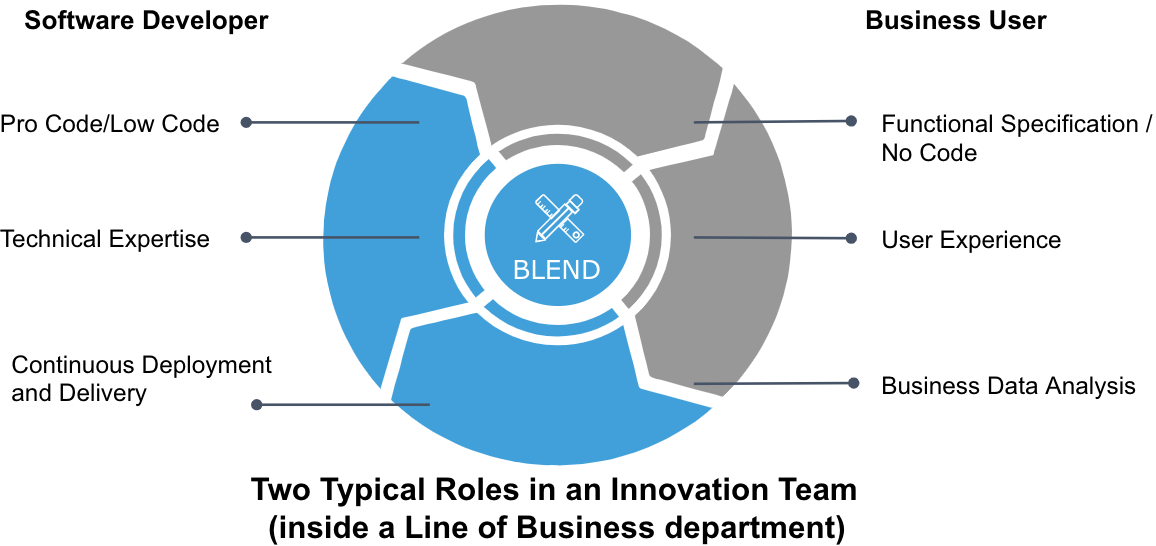The demand for flexible business models from our consumers is at an all-time high, re-assembling and re-composing organization’s digital products at a faster pace is the top priority of stakeholders. Purchased off-the-shelf applications are not fluid enough to keep pace, an application layer that provides active personalization of business capabilities is required to satisfy expectations from customers — and is key to making the composable enterprise dream a reality.
Take it from a serial consultant that helps organizations in their composable enterprise journey — we have learned that the challenges ahead are real. Here they are:
Challenge #1: Finding the right middle ground for an application scope
Decomposition in the software world isn’t new. Lego blocks, SOA, microservices, even the Mainframe-era all championed a similar iteration of this software architecture concept. In the last decade, with the success of RESTful APIs and microservices, this dream is closer than ever. However, in the current wave of microservices, an argument has emerged that criticizes microservices as failing ‘distributed monoliths.’ This paradigm claims that they have become too small and chatty, management overhead has become impractical, and some services are not independent enough. Finding a middle ground in composing ‘packaged application(s)’ is crucial in design and development.
In a composable enterprise, a packaged application must be well-defined functionally. It’s loosely coupled, reusable, and autonomous enough, but the scope-of-work needs to be bounded within a well thought-out single business capability. It’s easier said than done — but it’s essentially a mini-application. The packaged application can have multiple APIs and entities but it should have ‘business capability boundaries.’ It can scale dynamically with independence, and only a single business unit / team maintains a packaged application.
Challenge #2: The barrier in innovation teams
Developers and IT roles within a business unit is becoming the norm. Every year, more and more companies are embracing the decentralization structure on the people side, by creating an ‘innovation team’ in their line-of-business teams. This is definitely a step in the right direction. However, language barrier and user friendliness challenges arise with internal and external alignment. Developers still have a certain level of technical advisory and expertise dependency outside the team — around enterprise-wide frameworks and best practices. Business roles like product managers aren’t collaborative enough with developers when crafting the product functionality and end-to-end user experience. There is still a huge enough practice disconnect in this kind of team, the level of disconnect can be measured based on the quality of applications the team produces.

The language issue is rooted culturally in their tactical project-centric mindset, creating ‘innovation teams’ through reorganization, putting IT roles in LoBs full-time and expecting top results is not realistic. Cultural transformation programs that instill product-centric delivery thinking to teams is what works. The complexity of the software stack is a major productivity factor, adoption of ‘citizen developer’ toolset is key. Low or no-code modeling could ease up the burden, else teams will be too hung up on low-level technical nuances. Hand-coding implementation of: session states, data mapping, connection reliability are now longer practical.
Challenge #3: The power to govern them all
A composable enterprise advocates for a distributed system architecture to achieve rapid development and innovate faster through decentralization — which includes software and application stack freedom between teams. However, lifecycle management importance hasn’t been deprecated — maintain / manage / operate, or governance as one of the cycles. Governance is a critical consideration for a composable enterprise — with interoperability, orchestration, security, and analytics all baked in. It’s essential to have a platform with visibility to manage data interactions between the packaged applications both real-time and offline.
Look to a technology platform that meets the various needs of your business during each of the application lifecycle management phases. This means identifying a platform that is feature-rich and fully native across important modules within the lifecycle of your packaged application from design, build, test, deployment, and eventually management. Below is a sample illustration of modules a full lifecycle composable enterprise platform ideally have.

There’s a light at the end of the tunnel
The most important lesson for teams and organizations embarking on the composable enterprise journey is to always have democratization at the center of every phase of the initiative.
- Assembling application experience using integration: Many organizations limit themselves to the datasets of 1-2 systems of record applications, or only consider integration as an afterthought. Make integration an integral part of your product innovation where data aggregation between systems isn’t a limitation.
- Adapt independent continuous delivery: Your autonomous packaged application should have minimal dependency. It must be iterated on and released with next to no effect/disruption to other applications/products.
- Advocate innovation teams in lines of business: Put practical measures in place to govern full-time IT teams in lines of business. Hire and invest in retraining innovative business users to viable tools where they can contribute.
Reshaping the organization’s technology isn’t the main concern in such a transformational endeavor. People, culture, and policies are equally involved to succeed. The speed of change is dependent on the organization’s maturity level and agility. A truly composable enterprise however is an organization that is prepared for disruption, can deliver experiences at the speed of customer demand, and actively leads innovation as the world of consumption changes at an unprecedented pace.
Learn how to transform your organization into a composable enterprise to compete and win in the digital economy by downloading our whitepaper, The rise of the composable enterprise.
——————————————————————————————————————–WhiteSky Labs is a Premier Partner focused on offering 100% MuleSoft® solutions to connect APIs, SaaS, and SOA. Anypoint Platform™ is the #1 integration and API management platform, used by 35% of the Fortune 500 companies. Capgemini has recently confirmed the acquisition of WhiteSky Labs and will integrate in the coming months as a dedicated MuleSoft Business Unit.









